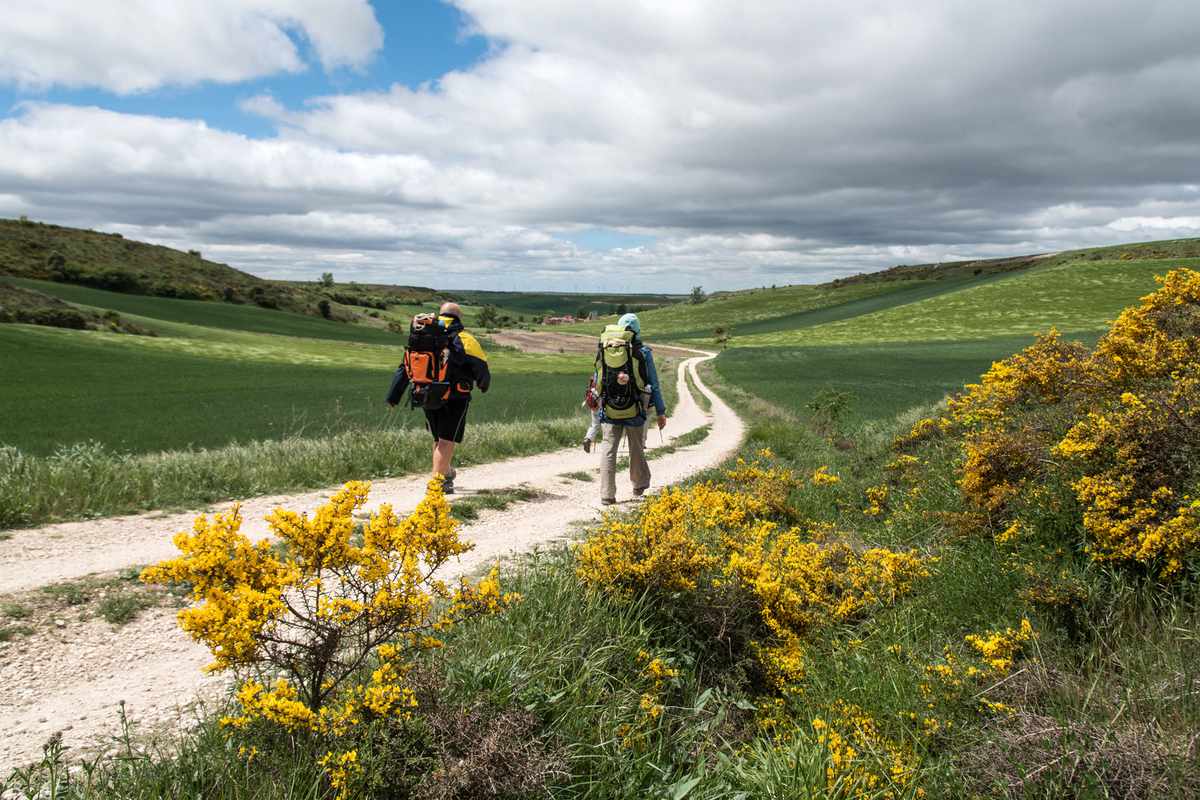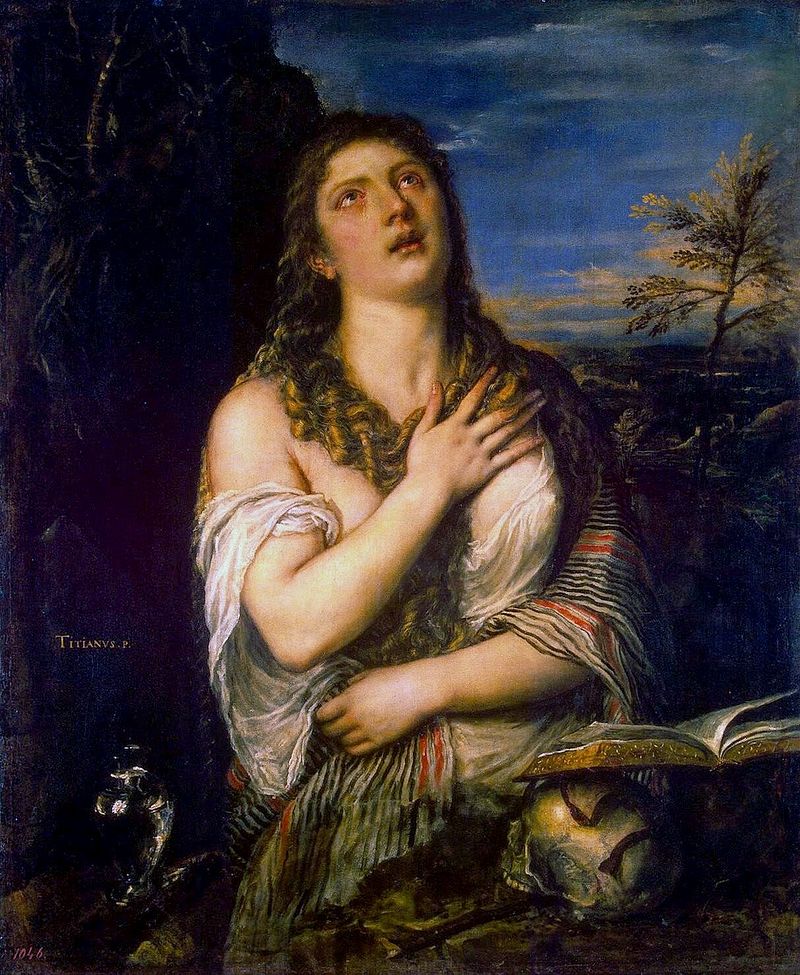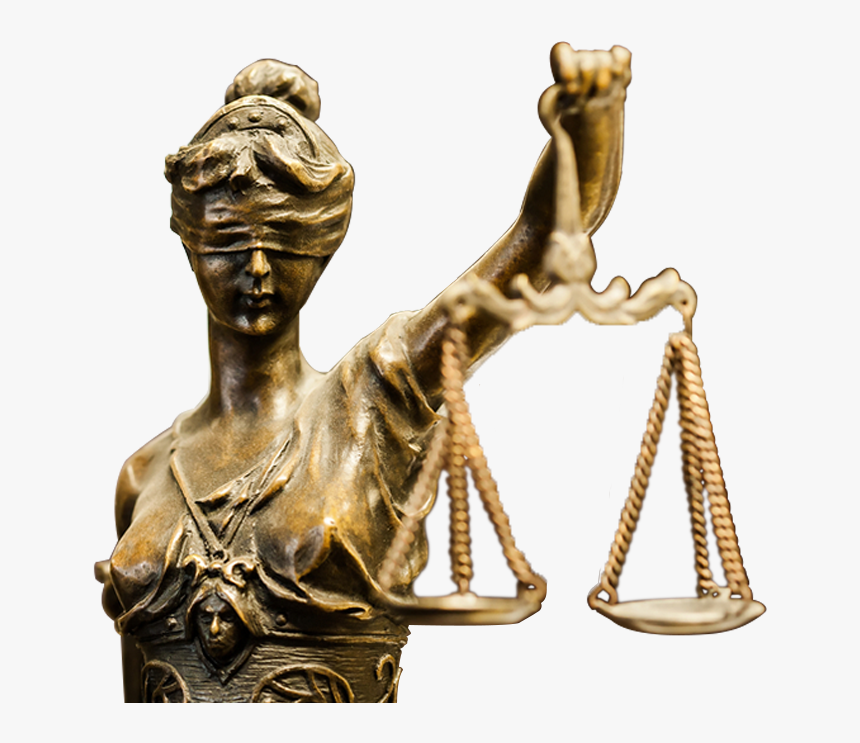
* * * *
Last Saturday, July 22, was the Feast Day for “Mary of Magdala.” Three days later, Tuesday July 25, we remembered James, son of Zebedee. He’s one of several “Jameses” in the New Testament, but “St. James the Greater.” And this James is the Patron Saint of Pilgrims.
Each year at this time I keep referring to St. James as Patron Saint of Pilgrims, mostly because I usually have a pilgrimage planned for the following September. This year is no different. For 15 days next September I’ll be hiking the GR 70 in France, also known as Robert Louis Stevenson Trail. I wrote of that Trail in the September 2016 post, On St. James, Steinbeck, and sluts.
The “sluts” in question were mentioned by Stevenson in his ground-breaking 1879 work Travels with a Donkey in the Cévennes… [C]onsidered a “pioneering classic of outdoor literature,” [it inspired] John Steinbeck‘s 1962 nonfiction work, Travels with Charley.)
That post ended with a note on Stevenson‘s trailblazing 1879 pilgrimage – with a donkey – in the Cévennes. But I’d written about it earlier, in February 2015’s On donkey travel – and sluts.” And just so you know, his word “sluts” didn’t mean what it does now. (Explained in the notes, the word was grammatically correct in 1879, but raises some eyebrows today.)
For the trip Stevenson invented one of the first-ever modern sleeping bags, and on the hike – from Le Monastier-sur-Gazeille to Saint-Jean-du-Gard – he often had to use it, camping out in the open. And quite often found himself lost and having to rely on strangers for help.
One night he’d run across some village people – not the Y.M.C.A. kind – who fled at the sight of him. He may have been just a wandering camper, but nobody “camped” back then. Wanderers like him were considered bums, vagrants or worse. So, when Stevenson entered a small village and tried to ask directions, he was not received warmly. One “old devil simply retired into his house, and barricaded the door.” He then tried asking two 12-year-old girls for directions – the “impudent sluts” – but they had “not a thought but mischief.” One stuck out her tongue, “the other bade me follow the cows; and they both giggled and jogged each other’s elbows.”
We probably won’t be treated so rudely in September, or have to ask directions. The trail is well marked, lots of pilgrims hike it each year, and there’s no need to either camp as he did, or hope for lodging in a private home. We have our rooms all booked up, so – like all “Camino hikes” – at the end of each day we can look forward to a warm bed, hot shower and a cold beer.
Getting back to St. James and his “Way,” I first hiked the Camino de Santiago – the “Way of St. James” – in 2017. From Pamplona to Santiago, 450 miles in 30 days. In 2019 I hiked the Portuguese Camino, from Porto – home of port wine – back up to Santiago. In 2021 I hiked the Pyrenees part, from France, over the mountains, back to Pamplona and ending in Burgos. And next year we plan to hike the Pilgrims’ Way to Canterbury, in England, from Winchester.
And why? The chance to take a break from everyday life, to take time out, “time to think, time to get away from life as it is.” Also the challenge, the chance for spiritual development and to get away from “civilization,” to re-connect with nature. Or as we kept saying on the Way of St Francis last September, “It sure beats playing bingo at the Senior Center!”
But we’re getting “off the trail,” so to speak. Here’s what Satucket noted about St. James:
Tradition has it that [James] made a missionary journey to Spain, and that after his death his body was taken to Spain and buried [at] Compostela… His supposed burial place there was a major site of pilgrimage in the Middle Ages, and the Spaniards fighting to drive their Moorish conquerors out of Spain took “Santiago de Compostela!” as one of their chief war-cries.
Which is another way of saying that the very name itself has had magical powers in the past. But that doesn’t answer the question, “Why go on such a long hike today?” You could find some other answers by Googling Why do People Walk [the] Camino de Santiago? Then too, Stevenson himself provided some good answers in his book.
Early on in his groundbreaking hike – his Travels – Stevenson found himself groping in the dark for a campsite. (A site described as “black as a pit.”) He ate a crude dinner – a tin of bologna and some cake, washed down with brandy – then settled in for the night. “The wind among the trees was my lullaby.” He woke up in the morning “surprised to find how easy and pleasant it had been,” sleeping out in the open, “even in this tempestuous weather.” He then waxed poetic:
I had been after an adventure all my life, a pure dispassionate adventure, such as befell early and heroic voyagers; and thus to be found by morning in a random nook in Gevaudan – not knowing north from south, as strange to my surroundings as the first man upon the earth…
As it turns out, that’s the nature of a pilgrimage. A break from “real life,” from the rat race that consumes so many. I noted that in St. James the Greater, and elsewhere described it as “ritual on the move.” As in religious ritual, a “patterned behavior” tied to a religious institution, belief, or custom, often with the intent of “talking to” – or hearing from – God.
Through the raw experience of hunger, cold and lack of sleep, “we can quite often find a sense of our fragility as mere human beings, especially when compared with ‘the majesty and permanence of God.’” In short, such a pilgrimage can be “‘one of the most chastening, but also one of the most liberating’ of personal experiences.”
Which brings us to “Maudlin’s journey.” Maudlin is just a corruption of Magdalene, as in Mary of Magdala, the ancient Jewish city on the shores of the Sea of Galilee. She had her own series of transforming pilgrimages. But one important one – for us today – happened long after she died. That posthumous journey – in its way – led “to a personal transformation,” a transforming of how we see Mary today. For example, Mary of Magdala | FutureChurch noted that for centuries she was “perhaps the most maligned and misunderstood figure in early Christianity:”
Since the fourth century, she has been portrayed as a prostitute and public sinner… Paintings, some little more than pious pornography, reinforce the mistaken belief that sexuality, especially female sexuality, is shameful, sinful, and worthy of repentance. Yet the actual biblical account of Mary of Magdala paints a far different portrait than that of the bare-breasted reformed harlot of Renaissance art.
But if you think about it – and read the Gospel accounts – Magdalene showed way more courage than the 11 male disciples, when push came to shove. While those 11 disciples cowered in their room, hiding out lest the Romans punish them as well, Mary went alone to the empty tomb. John 20:1: “Early on the first day of the week, while it was still dark, Mary Magdalene went to the tomb and saw that the stone had been removed from the entrance.” Thus the one indisputable fact about Mary is that she was both the first person to visit the empty tomb, and the first person to see the risen Jesus. (John 20:11-16.)
That’s why St. Augustine called her the “Apostle to the Apostles.” And that may have accounted for stories of her “sordid past.” Jealous men – both at the time and later – trying to cover up their own cowardice, or their own bias, by sullying her reputation. So one possible lesson from all this? Keep on “pilgrimaging.” Good results keep coming even after you die!
* * * *

* * * *
The upper image is courtesy of Pilgrimage – Image Results, which led me to Why the Oldest Form of Travel Could Be the Most Popular in a Post=COVID World: “Pilgrimages are the oldest form of travel,” from the start to go to shrines or temples and leave offerings, and/or connect to God or ancestors. Also defined as a “hyper-meaningful journey” or “sacred endeaver,” making it different from regular forms of travel or leisure; “it is the meaning or transformation that occurs.”
One pilgrimage that has exploded is the Camino de Santiago pilgrimage routes in Europe. There are many pathways, but one of the main pathways is the Camino Frances, which is a trail that goes from France to the Santiago de Compostela Cathedral in Santiago, Spain.
In my experience the Camino Frances was already pretty well “exploded” in 2017. So much so that my brother Tom took to taking detours away from the main route, and all those fellow pilgrims repeating over and over, “Hola, Buen Camino!” See the October 2017 “Hola! Buen Camino!”
The Book of Common Prayer reference. The “corporate-mystical” prayer is on page 339, the post-communion prayer for Holy Eucharist, Rite I.
For this post I also borrowed from 2014’s “St. James the Greater,” 2017’s Mary of Magdala and James the Greater, Saints, and Mary of Magdala and James the Pilgrim – 2022.
On “sluts.” The term had a different meaning from 1375 to 1425 – and apparently up to 1879. From the “late Middle English slutte; compare dial. slut mud, Norwegian (dial.) slutr,” which translated to “sleet” or “impure liquid.” See Slut at Dictionary.com:
Slut first appeared in the written language in 1402, according to the Oxford English Dictionary… At that time, slut meant roughly what one sense of slattern means today: a slovenly, untidy woman or girl. It also apparently meant “kitchen maid” (”She is a cheerful slut who keeps the pots scrubbed and the fires hot.”).
On sleeping bags, see Sleeping bag – Wikipedia, or A short history of sleeping bags – Wilderness Magazine. Versions of the “new-fangled invention” were first offered for sale in the late 19th century.
On “Compostela” and translating the name “James.” The name of the city is “commonly thought to be derived from the word ‘apostle,’ although a Spanish-speaking list member reports having heard it derived from ‘field of stars,'” which in Latin would be “campus stellarum.” The name James in Spanish is “Diego” or “Iago” – thus “Saint Iago” – and in most languages, “James” and “Jacob” are identical.
For the last part about Stevenson – and why geezers like me keep searching for adventure in their old age – I borrowed from Canoeing 12 miles offshore, a May 2015 post on my companion blog. It addressed the musical question, “Why would two old geezers – 63 and 69 respectively – paddle so far out, into the realm of sharks and drownings?” (Over eight years ago.)
On Maudlin, see Definition in American English | Collins Online Dictionary. The word has come to mean foolishly, tearfully and/or weakly sentimental, or “sad and sentimental in a foolish way.” The site noted that Mary Magdalene “was often represented with eyes red from weeping.”
Also on “Apostle to the Apostles,” see Mary Magdalene, “Apostle to the Apostles,” Given Equal Dignity in Feast, by order of Pope Francis in 2016.
The lower image is courtesy of wikipedia.org/wiki/Penitent_Magdalene_(Titian,_1565):
The Penitent Magdalene is a 1565 oil painting by Titian of saint Mary Magdalene, now in the Hermitage Museum in Saint Petersburg. Unlike his 1533 version of the same subject, Titian has covered Mary’s nudity and introduced a vase, an open book and a skull as a memento mori. Its coloring is more mature than the earlier work, using colors harmoni[z]ing with character. In the background the sky is bathed in the rays of the setting sun, with a dark rock contrasting with the brightly lit figure of Mary.
Also, Titian did a “racier” version in 1533. See Penitent Magdalene (Titian, 1533) – Wikipedia. For more on this Mary see also MARY MAGDALENE, Bible Woman: first witness to Resurrection, and What Did Mary Magdalene look like?
* * * *

